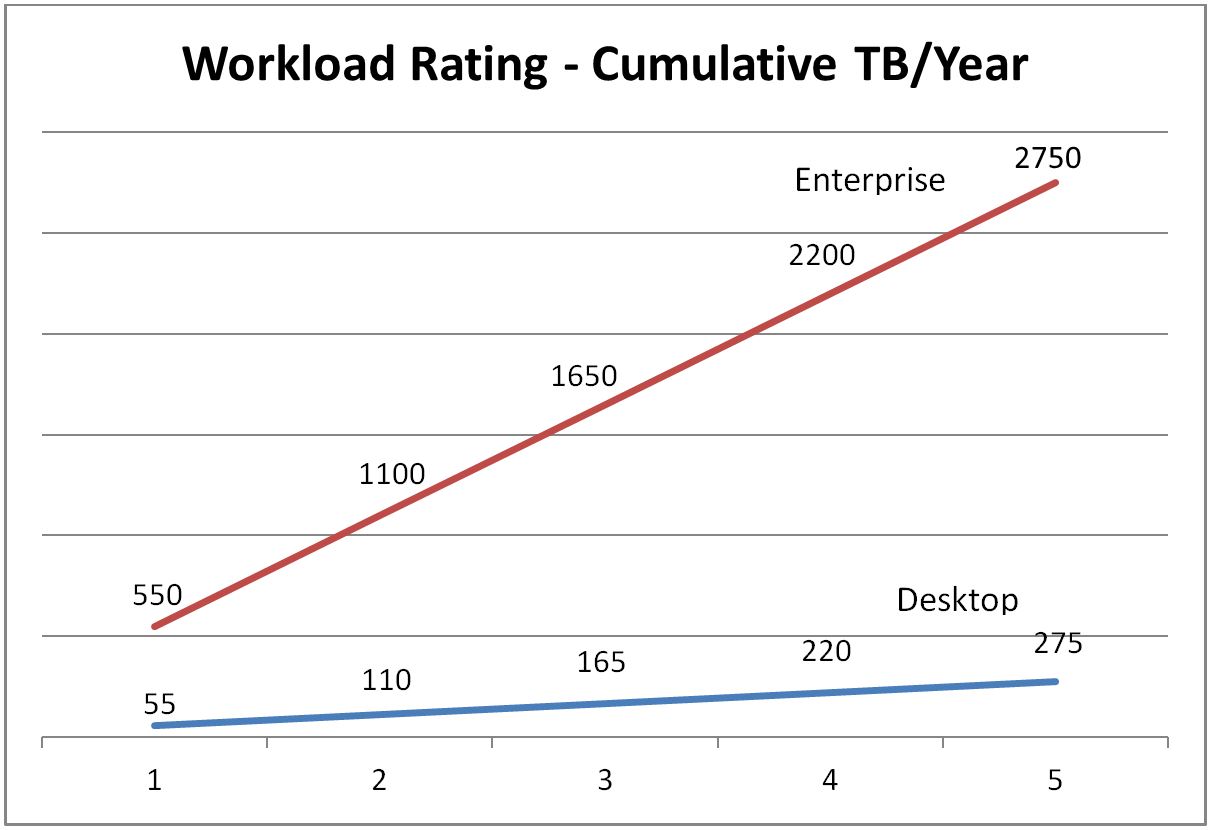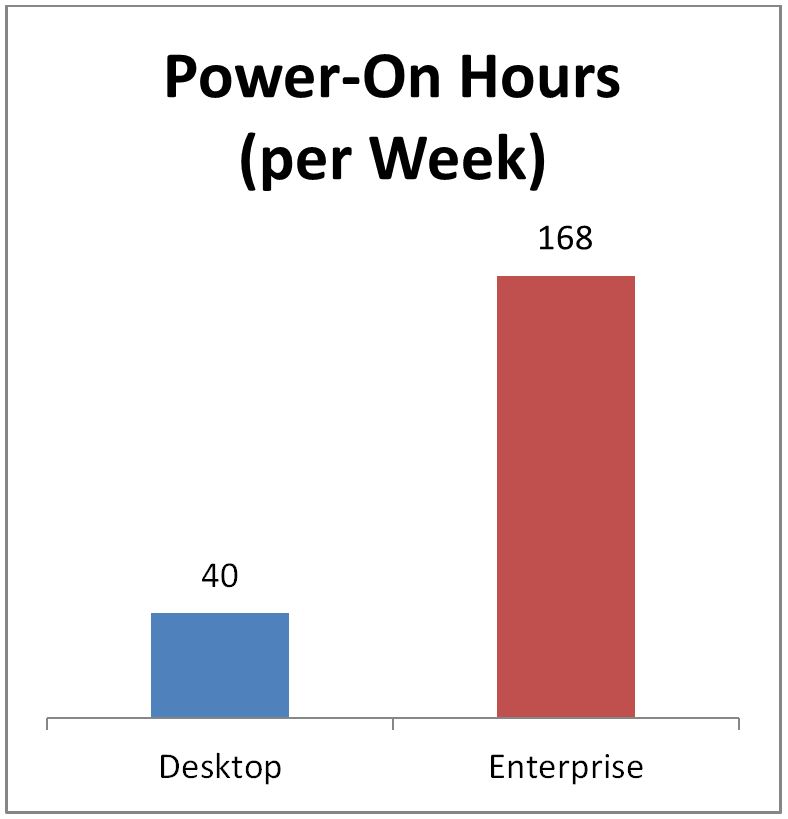You glance up at the clock on the kitchen stove as you lock the door behind you and toss your car keys on the counter. It’s 1:17 a.m. and you’re thinking your morning alarm is going to be coming all too soon. Little did you know when your boss called last night to say the email server was down (interrupting your family’s dinner) that your night would turn out to be such a disaster. “That’s 6 hours of my life I’ll never get back,” you say to yourself as you head up to get some sleep.
What you thought would be a simple re-boot, turned out to be a rip-and-replace hard drive rebuild – but why?
Let’s be honest here. Computers, peripherals and hard drives are not invincible and they do fail at times. Hard drives are mechanical devices and they wear out, just like cars, clothes and sneakers. Just like you would want to wear your most appropriate, best-fitting running shoes to run a mile or wear work-out gear to the gym, you should be using the right hard drive for the task at hand.I often get the question: “Can I just use a desktop hard drive in my storage array?” I curiously respond: “Why would you want to do that?” Cost is usually the main reason I hear. Is there really a significant difference between desktop and enterprise-class hard drives? Are there times when you can “get by” with a desktop drive? What criteria should you consider?
Will a desktop hard drive take the heat?
Back to the gym for a second, when you work out you get hot – well hard drives do too and heat is the number one enemy of just about any electro-mechanical device. While both desktop and enterprise drives are rated for an operating temperature of 60° C (140° F), there is a vast difference in the ratings of components used between them. Desktop drives are engineered to be powered on for up to 8 hours per day for 5 days per week while enterprise drives are designed for 24x7x365 power-on.
Another area to consider is how much workload you will be putting on the drive. Desktop drives are spec’d to process 55 TB per year while most enterprise drives are rated to handle 10 times that amount. Over a 5-year period that’s a lot more effective storage work you can expect from an enterprise drive.
Some hard drives are faster than others — 4 reasons
The next item you will want to think about is data throughput — the speed your data flows from the hard drive. This is affected by several key factors: host interface speed, RPM of the disk platters, cache memory on the drive and rotational vibration interference.
Most desktop drives have the 6Gb/s SATA interface only. Enterprise drives are usually available in 6Gb/s SATA and 12 Gb/s SAS – able to move twice the amount of data through the interface per second. Think of SATA like a 2 lane road versus SAS as a 4 lane highway. SAS also has dual ports with built in error checking between the host and the drive (T10 DIF). Dual SAS ports allow sophisticated host controllers to either switch to the secondary port if a line failure occurs, or to use both ports simultaneously for double the data payload (24 Gb/s). With SATA, some in the storage industry are concerned about “silent data corruption” where errors in data transmission can occur. Many enterprise-class storage system controllers perform a “read-after-write verify” to make sure no errors occurred with SATA drives. As you can imagine – this impacts performance further – slowing overall system throughput.
Hard drives are available in several RPM speeds. The highest performing are 15,000 RPM and 10,000 RPM. Higher capacity drives are usually in the range of 5,700 to 7,200 RPM. Here again, if you pick a desktop drive that is only 5,700 RPM instead of an enterprise drive at 7,200 RPM, overall system throughput will suffer. Closely related to this factor is the amount of cache memory on the drive. Desktop drives have a minimal amount of cache – usually around 64 MB – just enough to make up for the slower rotational speed. Enterprise high-capacity drives on the other hand have at least twice as much (128 MB) and enterprise high-performance drives can have very sophisticated caching with up to 32 GB of non-volatile flash memory.
Smart enough to counteract tiny vibrations
The last performance factor I’ll discuss today is rotational vibration interference – also known as RVI. RVI occurs when other components in a server or storage array cause vibration. These components might be other hard drives mounted in the same system, or even the cooling fans in the system or power supply itself. Because hard drives use a mechanical head that sweeps back and forth over the drive surface to read and write, vibration can cause a head to temporarily move off track (like when that person bumps into you with their shopping cart while you’re walking down the aisle in the grocery store). When this happens, the drive has to wait for the platter to make another revolution and re-try the operation. Enterprise drives have RV sensors which continuously detect microscopic vibration. The electronics on the drive read this sensor and use it as a feedback-loop to counteract the movement (bumping off track) of the head. Now this all happens in fractions of a millisecond and requires super-sophisticated algorithms – but the end result is that your server spends less time twiddling its thumbs and more time pumping out effective computing work.
Which hard drive costs more, really?
To wrap things up let’s go back to the issue of cost. In round numbers let’s just assume that a desktop drive of equal capacity costs roughly half that of an enterprise drive. On the surface that makes your finance person happy when they see the PO you submitted. However, that desktop drive is costing your company a whole lot more in lost productivity. When you add up all the time people are waiting for their email, or for that database query, or when your finance person is running payroll or month-end reports – the cost of wasted labor far outweighs the couple hundred dollars you might save up front. And most importantly, isn’t it worth a little extra to give you peace of mind so you can spend more quality time at home with those you care about?
Seagate has a complete line of enterprise-class hard drives, SSDs and PCIe flash cards to meet your business needs, large and small. Get your free customized drive report by linking to our Enterprise Storage Optimizer here.
—
Mark Hall is a storage industry veteran who has held senior product management and product marketing roles at the likes of storage vendor Hitachi Data Systems, solid-state startup Solid Data Systems, array manufacturer Xyratex and drive manufacturer Hitachi Global Storage Technologies. Mark holds a BS in Computer Science and an MBA and is senior marketing manager for Cloud and Kinetic Drives for Seagate Technology. In his off hours he enjoys interests in diet and nutrition, walking, bike riding, all of the newest gadgets and spending time with friends and family.









